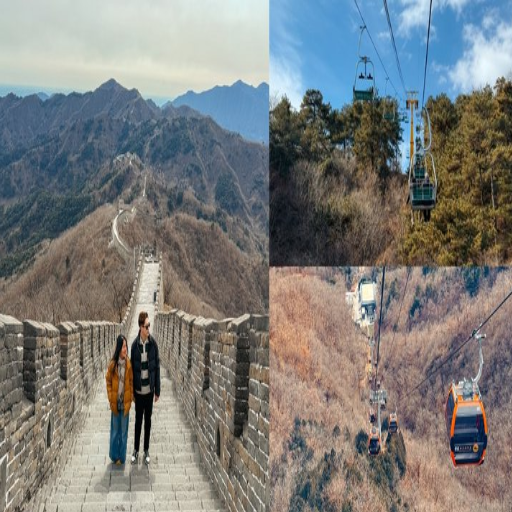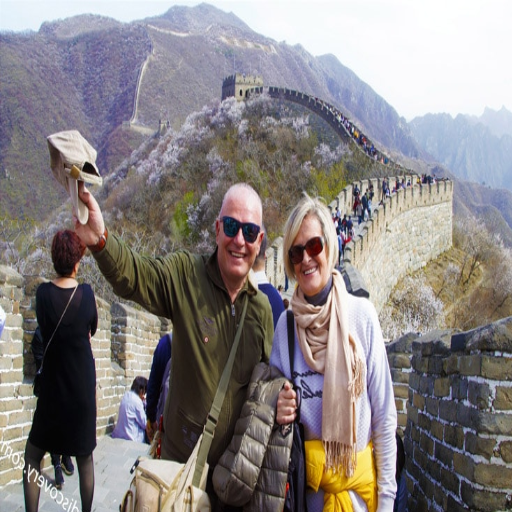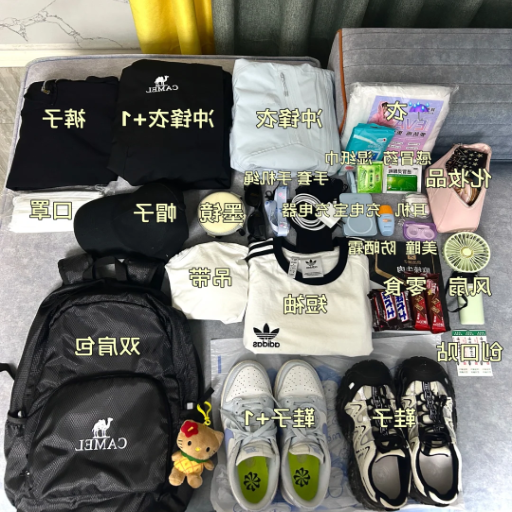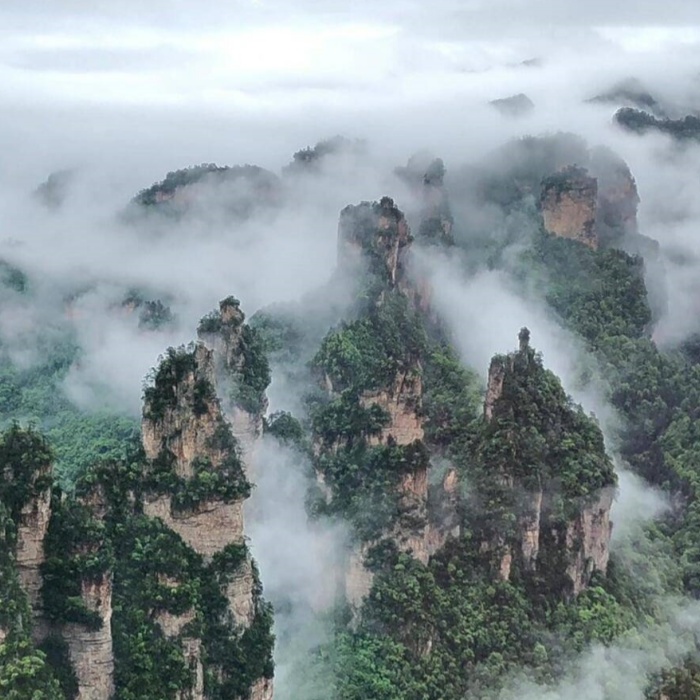Visiting the Great Wall of China while on a day trip from Beijing combines history, awe-inspiring achievement, and jaw-dropping scenery into an unparalleled experience. Whether it’s your first time visiting China or you are a seasoned traveler, this guide will help you make the most of your visit to this world-renowned landmark. We cover everything from picking the exact section of the Wall you would want to visit to transport, timing, and essential do-not-forget items. Get ready to create memories for a lifetime while marveling at this world wonder and stepping back in time!
What is the Best Way to Visit the Great Wall from Beijing?

Private Tour or Group Tour: Which One Should I Go For?
When booking any tour to see the Great Wall of China, your decision is mainly based on your interests, itinerary, and how much money you are willing to spend. About preferences, private tours provide the best options as you can choose what to include and what not to include in your package, such as quiet sections like Gubeikou or Jiankou. These travelers, having extensive budgets, often look for flexible exclusivity and in-depth value, which custom-tailored tour guides would provide based on their extensive documents. Every story has its price, which is behind the high price of private tours. Nonetheless, convenience and personalized attention do justify the added costs.
On the contrary, group tours are designed for those looking for social contact and new friendships when discovering the Great Wall, as they are less expensive. Usually, these tours take visitors through a more developed region, such as Badaling or Mutianyu, as they are known worldwide, are easy to access, and are less congested with people. Great for Loner Travelers, out-of-the-box thinkers who opt for an off-the-shelf solution and prefer arrangements made in advance. Still, freedom in group settings can be limited as participants must follow a paced schedule with compulsory stops.
In the end, factors like your budget and level of interest in overlooked parts of the Wall, along with the flexibility you may require, truly help you decide on the best option. You will never be disappointed with either option, as both experiences present a different way to appreciate the historical wonder.
What are the Most Popular Sections of the Great Wall?
The sections of the Great Wall of China are spread over 13,000 miles and receive millions of tourists yearly. The Badaling Section is one of the most famous and is located near the city of Beijing. Since Badaling is well preserved and easily accessible, it is a favorite for international tourists and first-time explorers. This section is also restored, which makes it suitable for families or anyone looking for a smoother experience.
Roads in the Mutianyu section, another highly frequented area, are reputed for spectacular scenery and lush greenery. A bit quieter than Badaling, Mutianyu offers a multitude of hiking routes and boasts more thrilling options such as a cable car and toboggan. Suppose you wish to get away from all the commercialized products. In that case, the Jinshanling Section has a blend of restored and wild areas featuring magnificent panoramic views, making the silver lining of its remoteness for avid hikers and photographers.
Expert thrill seekers will be glad to hear that the notorious steep and rough Simatai Section, one of the sections of the Great Wall, is a prime location for extreme activities. Parts of the Great Wall are illuminated for night tours, offering a breathtaking view of the Simatai Section and the Great Wall illuminated under the moon. Lastly, Jiankou Section is popular with experienced hikers because of the tough challenges it holds with its dramatic views and unrestored, rugged terrain. All together, these spots embody the beauty and variety of this historic structure, captivating tourists from all over the globe.
How do I buy a ticket for a Great Wall tour?
Tickets to the Great Wall can easily be booked in advance, either online or offline, and for the Great Wall of China, purchasing tickets is very simple. Many of these platforms and accredited travel agencies make ticket buying easy. Pick a specific section of the wall you intend to visit when purchasing tickets online. For most parts, tickets are issued on a section basis because of limited access and crowd restrictions. Reservations are strongly advised. For popular visits such as Badaling or Mutianyu, their websites often allow visitors to select their preferred date and time.
For added convenience, several platforms provide instant e-tickets that can be conveniently displayed as you arrive at the venue. Ticket prices vary according to the section, with most tickets priced between $6 and 30 USD; additional charges may apply for cable cars or shuttle services. Some sections, for example, Simatai, might require advanced booking due to capacity restrictions for night tours. Many tour operators provide combined packages that include the guide and transport to be booked alongside the tickets. If you plan to hire a guide or arrange transportation, bring an official ID for verification, and check the weather to guarantee an optimal experience.
How to Get to the Mutianyu Section of the Great Wall?

What Are The Ways To Travel From Beijing?
There are many different ways of traveling to the Beijing Mutianyu Great Wall. All options mix time and price as follows:
Taxi or Private Car: A taxi is one of the easiest and fastest ways to get to Mutianyu. It is around 90 kilometers from Beijing, and driving will take roughly 1.5 to 2 hours. This option is great for people who have families or large groups and offers a flexible departure time and itinerary for your trip.
Public Bus: The public bus is a really cheap option and can take you to the Dongzhimen Transit bus station in Beijing. From there, the 916 Express bus takes you to the Huairou North Avenue bus station. From there, you can hire local shuttles and taxis to get to the Mutianyu ticket office. Public buses do take longer, but this is a great option for those looking for a lower-cost alternative.
Tour Buses: Many licensed tour companies in Beijing provide dedicated tour bus services to Mutianyu. These buses usually board from convenient locations within the city and cover round-trip transport, entrance fees, and sometimes an English-speaking guide. This option is the best if you prefer a guided experience without logistical worries.
Rideshare Apps: Modern rideshare apps like Didi Chuxing provide a convenient alternative for reaching Mutianyu. You just have to book a ride straight from your location in Beijing. Though this method is a bit pricier than public transport, it’s accompanied by more convenience and a more comfortable, door-to-door service.
Regardless of the transportation method you opt for, starting early in the morning helps to bypass peak crowds, enhancing your experience as the Great Wall is magnificent in peaceful solitude.
Is There a Cable Car at Mutianyu?
Of course! Mutianyu has a cable car system that conveniently offers access to the Great Wall. Tower 14 is the endpoint for the cables that fetch visitors from the base of the area and is relatively uncluttered for a nice view. This relief is best for those who wish to recuperate their energy for further activities and are less able to move. The ride provides awe-inspiring total outlooks of the mountain region and the forest surrounding it, making it exceptional by itself.
Moreover, visitors may choose to use the cable car or the thrilling toboggan slide from Tower 6 when descending the wall. The latter offers a unique and entertaining ride. Remember, though, that the ticket prices for the cable car are different from the entrance fee for other wall sections. Before making plans, take note of their website for the most current pricing and operational hours. Both one-way and round-trip ticket options are often provided.
How Long Does it take to reach Mutianyu from Downtown Beijing?
Mutianyu can be accessed in around one to two hours from downtown Beijing. If you’re traveling by private car, you would avoid traffic. If you travel on public transport, you are looking at almost double the time to reach Mutianyu. A distance of 45 miles or 70 kilometers can be covered in a shorter time frame if you leave during non-peak hours. So, if you’re traveling using a public vehicle, you must account for traffic. Most of the many routes to Mutianyu have less traffic and can be a slow and beautiful ride through the countryside. The difference in time arises primarily due to traffic and routes taken.
Using public transport might include a subway, bus, and shuttle combination that will take 2 to 3 hours to complete. One popular option is to take the subway to Dongzhimen Station and then board either a direct bus or a private tour shuttle—skip the direct ride and take a short walk instead to the entrance of the wall.
If easy access is essential, reserving a private car or taxi is almost always the most efficient and flexible option, allowing travelers to set their timeline. Many guided tours leave the central hotel and offer pick-ups and drop-offs to Mutianyu, so you can enjoy their services without worrying about traffic jams. Regardless of which way you go, starting the day early will give you a head start on appreciating this famous section of the Great Wall.
What to Expect During Your Great Wall Day Tour?

What are the Highlights of a Day Tour to the Great Wall?
A day tour to the Great Wall of China combines the rich history of a civilization with awe-inspiring engineering feats and breathtaking scenery. One of the highlights is how visitors can walk along ancient stone pathways and towers such as those from the Ming Dynasty. The views of the surrounding green mountains and landscapes shift dramatically with the seasons—relatively warm greens in the summer, vibrant autumn foliage, or snow-capped peaks during winter.
Another key feature is the wall’s architectural ingenuity. Its design includes watch towers, battlements, steep staircases, and other features that outline its historical significance as a defensive structure. Well-preserved non-crowded sections, like Mutianyu, are great for scenic photography and enjoying the area’s peacefulness.
Furthermore, many tours include cultural activities like dining on authentic Chinese food in local eateries and visiting nearby villages for a glimpse into the region’s history and heritage. Another advantage is the ease of access, with cable cars and toboggan rides offered in certain parts of the Wall, which add fun to the trip. Spending a day at the Great Wall is an exploration of China’s magnificent history and an adventure packed with breathtaking experiences for any traveler.
What things can you try out on the Great Wall?
The Great Wall’s breathtaking Architecture offers a diverse range of activities for history lovers, leisurely travelers, and athletes. For those in search of physical challenges, the Jiankou, Mutianyu, and Badaling sections of the wall provide steep hikes, family-friendly treks, and astonishing views all in one. In addition, the wall’s architecture provides hikers with even more variety to marvel at.
For photography lovers, every sunrise and sunset offers jaw-dropping views of the ancient walls alongside stunning photography. In winter, the stones are snow-white, while in the summer, they are awash with vibrant greenery. For history lovers, guided tours that detail the wall’s construction will gladly satisfy one’s curiosity.
In the Mutianyu section, people can freely go tobogganing or enjoy a pleasant ride in the cable cars for 360-degree views, completely transforming popular sights. People can also participate in cultural shows and festivals at designated zones, which adds to their travel experience alongside Chinese heritage. The striking modern and ancient world architecture marvels of the wall cater to everyone, whether people search for aerie, culture, history, or adventure.
Is There A Guided Tour Option?
If you wish to visit the Great Wall of China with professional guidance and appreciate the convenience of expert insight, various guided tours are available. Depending on one’s intensity of interest and involvement, most tours are half-day or multi-day excursions. Guided visits are more beneficial for someone new in the Great Wall area as they include round-trip transportation to part of the wall. Most importantly, guides share fascinating stories and profound insights ranging from the value of the walls’ history, architecture, and construction to many other captivating details.
Private tours are in high demand among visitors with distinctive and flexible schedules. On the other hand, group tours are inexpensive and provide an enhanced social experience. Specific tours specifically focus on hiking and adventure routes, allowing travelers to cross parts of the wall that are not highly restored, such as Jinshanling or Simatai. Some tours focus on family-oriented activities; they accompany cultural visits to neighboring villages and restaurants. Needless to say, guided tours are perfect for all kinds of travelers and provide an effortless and fulfilling means to appreciate the wonders of the wall.
What Should You Bring for a Day Trip to the Great Wall?

What Clothing is Recommended for Hiking at the Great Wall?
While planning a hike on the Great Wall, the primary consideration regarding clothing selection is comfort, how it functions with other pieces of clothing, and the weather. The most appropriate fabrics are lightweight and breathable, efficiently and quickly eliminating moisture. Choose lightweight shirts and pants with good ease of movement and quick drying. Layering is greatly recommended in spring or autumn when the weather fluctuates. A light jacket or fleece is excellent for the beginning of cool mornings, as it is easy to pack during the hike.
Hiking shoes and boots are always a strong form of clothing recommended during the hike; strong footwear will also be required for stability on the rugged and steep slopes. Don’t forget to wear sunshades and a rimmed hat or cap to protect yourself from the hot sun in the summertime. If rain is on the forecast, do not forget to pack a waterproof jacket or poncho, as they will be a great asset to the kit. Regardless of clothing, bringing supportive socks is helpful as they will prevent blisters from forming. You can dress how you like, allowing more leisurely exploration of the stunning views of the Great Wall.
Should I Carry My Food and Water?
When planning your portion of the trek on the Great Wall, bringing enough food and water with you is crucial, as staying hydrated is vital in the warm months and especially in strenuous portions of the trek. General recommendations suggest at least two liters of water for a moderate hike, while more should be brought during hotter weather conditions or more intense treks. Water sources are also known to be unavailable in certain parts of the trail, and for added convenience, a reusable water bottle or hydration pack is ideal. Per-person water requirements also depend on the number of individuals in a group.
During portioned hikes, achieving a quick boost in energy is ideal. Therefore, lightweight, energy-dense snacks such as trail mix, granola bars, or dried fruit are recommended. For longer hikes, packable meals that are easy to store, such as sandwiches or pre-packaged meal packs that can resist spoilage, are ideal. Finally, remember to clean up any waste you might discard during your hike so the region remains clean.
What Essentials Should You Pack for a Great Wall Visit
Crafting an itinerary for the Great Wall of China begins with packing. A comfortable set of shoes is essential when hiking on the Great Wall. Walking on the Great Wall has its fair share of challenges, like steep climbs, uneven terrain, and rugged steps, which must be carefully navigated. Also, since the temperature varies significantly during the day, it is best to wear moisture-wicking clothing that is lightweight and can handle the heat. A lightweight waterproof jacket is good to have during sudden rain showers.
You can also bring a backpack, as long as it is not too bulky, making hiking easier. An ideal combination is sunscreen, sunglasses, and a wide-brimmed hat for sun coverage. Also, bringing a filled reusable water bottle increases the ability to withstand the hike since some vendors offer bottled water. Lastly, placing basic first aid items into the backpack ensures more comfort during the hike.
Furthermore, ensuring you have a map or a smartphone with fully charged offline maps will help you stay oriented. If your plan includes visiting during the colder months, you will require thermal layers, gloves, and a beanie to keep you warm. Make sure you have your camera or smartphone to capture the stunning sights, but remember to bring additional battery packs or a portable charger since more remote regions may not have access to electricity. With these essentials, you will be well-equipped to maximize your adventure on the Great Wall.
What are the Best Times to Visit the Great Wall?

What time of year is the best time to visit the Great Wall of China?
The Great Wall receives the most visitors during the spring and autumn calendar months. For my taste, I would suggest traveling to the region two times a year: in late March to early June, and from September to early November. During these periods, the weather is unprecedented, pleasantly warm but not overly hot, and usually free from the miserable summer heat or the brisk winter cold. In spring, the season’s charm is in full swing, but in the autumn, colorful foliage will add wonderous beauty to the view of the wall.
I find this time of year particularly great due to the weather and because the surroundings are much more visually stunning, which improves the experience. However, peak season does bring larger crowds and bigger lines, particularly around Badaling and Mutianyu sections. If, like me, you prefer fewer people, try going during the weekdays or head to less popular places, like Jiankou or Simatai. These lesser-known places offer a much more authentic and calm experience.
Simply put, visiting during peak season ensures you enjoy the majesty of the Great Wall without worrying about the weather too much. Remember to plan, purchase tickets, and arrive early to enjoy your visit while avoiding unnecessary lines.
What Weather Factors Should You Think About?
Like many of my travels, when visiting the Great Wall, planning for the prevailing weather conditions is one of the most significant factors for enjoying the trip. Springs and autumns are the best, specifically April to June and September to November. These months usually have a temperate climate and excellent visibility, giving them the perfect backdrop for a scenic view. The thermometers within these months are also reasonable, meaning walks along the wall can be done comfortably.
I weatherproof myself in case of sudden temperature changes, which can happen in the mountains. In the days leading up to my trips, it’s best to check the weather and pack accordingly, bringing sunscreen, a hat, and plenty of water to remain hydrated. I prefer to wear my layers on cooler days, as the mornings and evenings can become chilly. I also wear sturdy shoes geared for the weather, as parts of the wall can get uneven, steep, and rain-soaked, making them slippery.
If I choose to go in the summer, I also have to watch out for the heat and humidity, which make hiking particularly difficult. Frequent hydration and shaded breaks become vital. On the flip side, winter offers breathtaking views with its snow-splattered scenery, but the freezing temperatures mean I need to have insulated gear and snowtreads ready so I can stay safe. It’s all about strategy with the weather to fully appreciate the majesty of the Great Wall, no matter the season.
Are Night Tours Worth It?
“There’s no denying that a night tour at the Great Wall has its perks, of being a truly unique and magical experience. Visiting at night, in particular, makes the atmosphere feel entirely different than during midday. It is easier to appreciate the architecture of the structure when the moon is lit alongside glowing lights around the wall, softly lighting up the area. The sheer scale of the wall is astonishing and emphasizes its beauty when the moon is out. The tranquility and stillness of nighttime also allow for a deeper appreciation of the wall, as there are fewer people compared to daytime.
At night, the beautiful views seen during the day are a little limited, but the restricted view focuses on the ambiance. It is much easier to hike up sections of the Great Wall in cooler temperatures than in the scorching sun, so the night atmosphere is welcomed. If the weather cooperates, small portions of the areas can allow for stargazing, which makes night tours exciting. While stargazing is a nice perk, preparation is crucial. It can drastically improve the experience while ensuring safety. Wearing sturdy shoes, dressing up lightly, and most importantly, bringing a flashlight will drastically help on the uneven steps.”
Fundamentally speaking, taking a night tour gives the impression that one is revisiting the past. This is because a person senses the stillness surrounding the site, enriching its history and the tales murmured by the stones. This is a recommendation to those adventurous enough and wanting to change their world view on the global landmark around it—the experience is peaceful, mind-blowing, and remarkably unforgettable.”
Frequently Asked Questions (FAQs)
Q: What Is the Best Section of the Great Wall of China to Visit On a Day Trip From Beijing?
A: Mutianyu and Badaling are the best sections of the Great Wall to visit on a day trip from Beijing. Both sites offer breathtaking views of the wall and the surrounding nature. However, Mutianyu is less crowded and has a toboggan ride, which makes the visit more exciting.
Q: How Do I Get From Beijing to the Great Wall?
A: You can take a tour that leaves from Beijing and includes everything, or you can take public transport like buses or taxis. To avoid these hassles, many tourists prefer guided tours, which are more informative, especially when it comes to learning the history of the Ming Dynasty and the Great Wall.
Q: Are There Options for Free Cancellation on Great Wall Tours?
A: Tour companies offer generous free cancellation policies for their tours of the Great Wall of China, so yes, there are options for free cancellation. For reservations, make sure you check the rules because the terms can be different for various providers.
Q: What should I wear to visit the Great Wall of China?
A: For the hiking parts of the Great Wall, it is best to wear comfortable walking shoes, as some sections feature steep ascents and rough terrain. Dress in layers, adding or removing them as needed because the weather can change throughout the day.
Q: Can I go to the Great Wall during a layover in Beijing?
A: Uh-huh, if your layover is long enough, you can schedule a short excursion to the Great Wall section closest to you, like Badaling or Juyongguan. Remember to consider the travel time to and return from the Beijing Capital Airport with plenty of time before your connecting flight.
Q: Which options are available for a guided tour to the Great Wall?
A: Many of these tours will have a professional guide available who will give you interesting facts about different places, such as the Great Wall and other important sites like the Ming Tombs and some of the watchtowers. Be sure to book a tour that states that a guide will be provided if you want to learn more about history.
Q: What is the duration of a trip from Beijing to the Great Wall?
A: As framed in the question, the Great Wall can be reached from Beijing in 1.5 to 3 hours by car. This traffic-free scenario is usually experienced during weekends or holidays. It can take visitors much less time if they don’t mind reaching the wall at off-peak hours. Visiting the wall itself is another factor that can add to the hours spent on the trip.
Q: What other things are there to do at the Great Wall?
A: Besides hiking, visitors can explore several other activities, including sightseeing, like using the telescope. Some sections allow riding the toboggan, like at Mutianyu. Visitors can also try out other areas located close to the Great Wall.
Q: Is there an option to visit the Great Wall tailored for children?
A: Most certainly, these allow not only children but daring adults looking for some fun. The paths are suitable for families overflowing with kids, so this is a great option. Look for tours that cater specifically to families for the best experience.


